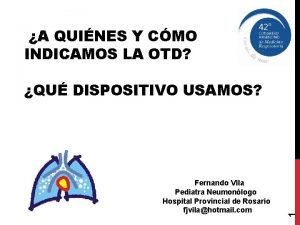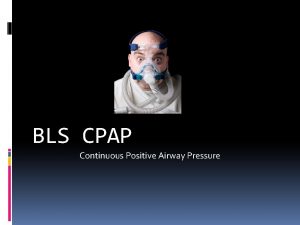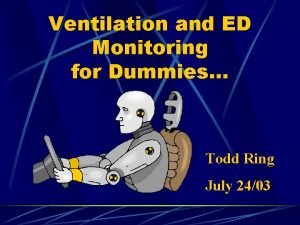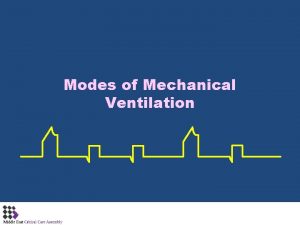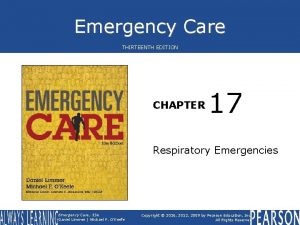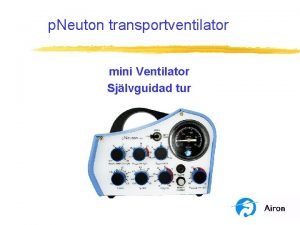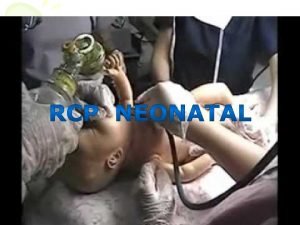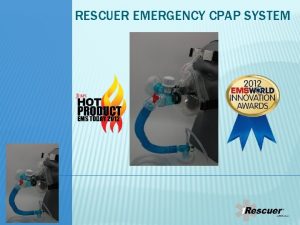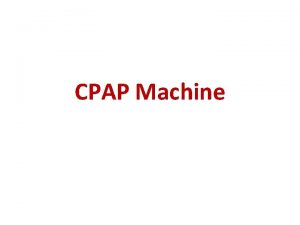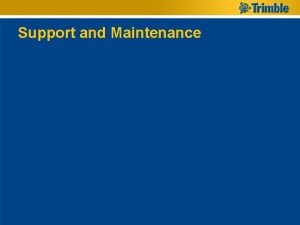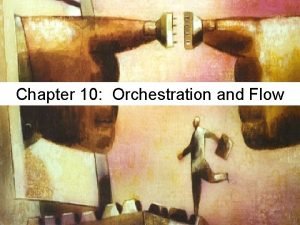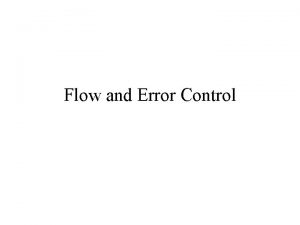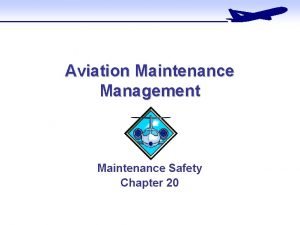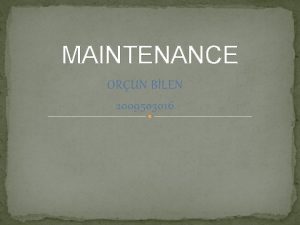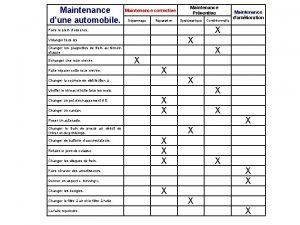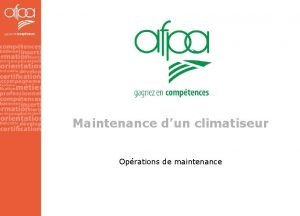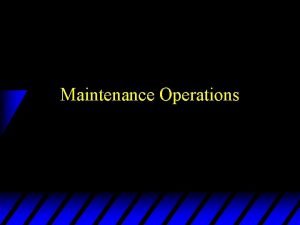CPAP Maintenance and monitoring Maintenance and Monitoring Flow














- Slides: 14

CPAP Maintenance and monitoring

Maintenance and Monitoring § Flow Bubble minimal bubbling (2 to 7 liters/min) Ventilator 6 to 8 cms of water § Fi. O 2 (21% to 60 %) : Sp. O 2 90% - 95 s% § CPAP (4 to 7 cms) : Recessions / CXR and Sp. O 2

CPAP and Fi. O 2: Proportionality CPAP 5 cms Fi. O 2 50% CPAP 6 cms Fi. O 2 60% CPAP 7 cms Fi. O 2 70 to 100% CPAP 4 cms Fi. O 2 25 to 40%

CPAP § CPAP of < 4 cm H 2 O never given! § CPAP of 4 -7 cm H 2 O is a good range Advantages many, disadvantages few! § CPAP of > 7 cm H 2 O is a bad range Advantages some, disadvantages galore!

Warming and Humidification § Temperature of inspiratory gases at 37 o C § Relative humidity of 100% § No condensation in the inspiratory circuit § Some condensation in the expiratory limb

Humidifier 37 o c 39 o c 37 o c

Monitoring § Patient – HR, RR, SAS Score, Sp. O 2, Air entry and bubbling – CFT, Blood pressure, AF, Urine output, Abd girth § Machine – CPAP pressure, Fi. O 2 and Flow – Water in humidifier, Bubble chamber – Condensation in circuit § Interface – Nasal injury, Cap size, Prong size, Secretions

CXR

Adequacy of CPAP Satisfactory cardiorespiratory status § Comfortable baby § Minimal retraction, no grunt § Normal capillary refill, BP Bubbling Breath sounds § Normal saturations: 90% - 94% § Normal ABG (Pa. O 2 60 -80, Pa. CO 2 40 -60, p. H 7. 35 -7. 45, BE± 2)

Weaning § Decrease Fi. O 2 and then CPAP § Every 1 cm decrease in CPAP, aim 10% in Fi. O 2 § CPAP : 5 cm & Fi. O 2 50%, maintain CPAP till Fi. O 2 is 30% § Decrease CPAP to 4 cm § The disease process has improved § If CPAP 4 cm & Fi. O 2 < 30% & clinically well (no RD, Sp. O 2 > 90% & Normal ABG) : Remove CPAP

Procedure after the CPAP § Oral and Nasal suction / Saline nebulization if secretions § Watch for apneas, tachypnea, retractions and bradycardia § Frequent change in positions

Failure of CPAP § Continuing retractions, grunt § Recurrent apneas § Sp. O 2 <90 %/ Pa. O 2 < 50 : PEEP > 7 & Fi. O 2 >60% § Pa. CO 2 > 55, Poor respiratory efforts § Baby not tolerating CPAP

Reasons for Failure § Failure of the CPAP system § Worsening of baby Respiratory Cardiovascular Neurological

Summary § Titration Flow Bubbling Fi. O 2 Sp. O 2 CPAP Recessions/CXR § Proportionality of Fi. O 2 and CPAP § Systematic evaluation: Failure of CPAP


